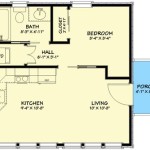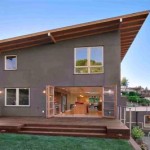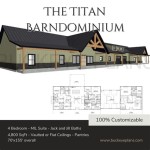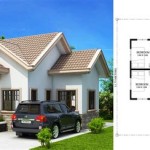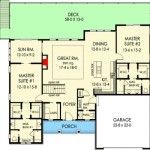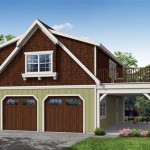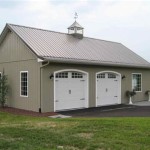Mountain House Plans With Basement: Expanding Living Space and Value
Mountain house plans with basements offer a multitude of advantages, transforming what might otherwise be unusable space into valuable living areas. In mountainous regions, sloping lots are common, making the construction of a basement not only feasible but often a cost-effective way to increase square footage. This type of design optimizes building performance, addresses site-specific challenges, and adds significant value to the property. This article will explore the nuances of mountain house plans with basements, highlighting the benefits and considerations involved in such construction.
Leveraging Sloping Terrain for Basement Construction
The defining characteristic of many mountain properties is their uneven topography. Instead of leveling the entire building site, which can be an expensive and environmentally disruptive process, incorporating a basement allows the home to adapt to the natural slope. This design approach significantly reduces the amount of excavation required compared to a traditional slab-on-grade foundation on a level lot. The excavated space naturally creates a basement level, which can then be finished or left unfinished, depending on the homeowner's needs and budget.
Walk-out basements are particularly well-suited for mountain homes. Because of the slope, one or more sides of the basement may be fully exposed to the exterior, allowing for the inclusion of windows and doors. This transforms the basement from a dark, subterranean space into a bright, usable area that feels like an extension of the main living level. Walk-out basements can even feature patios or decks, seamlessly connecting the indoor and outdoor environments.
The cost-effectiveness of building a basement in a mountain setting stems from the pre-existing excavation. The cost per square foot for a basement is often lower than that of the main living levels because the foundation walls are already partially in place. This saving can be substantial, especially when considering the alternative of extensive site grading and retaining walls necessary for a level foundation.
Benefits of Incorporating a Basement into a Mountain Home
Beyond the cost-effectiveness of construction, mountain house plans with basements offer numerous practical and lifestyle benefits. The added square footage can be used for a variety of purposes, significantly enhancing the functionality and value of the home.
One primary benefit is the increased living space. A basement can accommodate extra bedrooms, bathrooms, a home office, a recreation room, or a home theater. For families, this provides ample room to spread out and pursue various activities. For homeowners who enjoy entertaining, a basement can serve as a dedicated space for gatherings, complete with a wet bar, seating area, and entertainment system.
Basements also offer valuable storage space. Mountain homes often require storage for outdoor gear, such as skis, snowboards, hiking equipment, and camping gear. A basement provides a convenient and organized location to store these items, keeping them out of the main living areas. Tool storage, seasonal decorations, and other household items can also be efficiently stored in the basement.
In addition to living and storage space, basements can provide a buffer against temperature fluctuations. The earth surrounding the basement walls helps to regulate the temperature, keeping the home cooler in the summer and warmer in the winter. This passive temperature control can reduce energy consumption and lower utility bills. Furthermore, the basement acts as a shelter during severe weather, providing a safe haven during storms or other emergencies.
Another advantage lies in the potential for rental income. A well-designed basement with a separate entrance can be converted into an apartment or in-law suite. This can provide a steady stream of income, helping to offset mortgage payments or other expenses. Mountain towns often have a high demand for rental properties, making a basement apartment an attractive investment opportunity.
Design Considerations for Mountain House Plans with Basements
While the benefits of mountain house plans with basements are significant, careful planning and design are essential to ensure a successful project. Several factors must be considered, including site conditions, drainage, insulation, and building codes.
Site conditions play a critical role in basement design. The soil composition, slope of the land, and proximity to water sources must be thoroughly assessed. Soil testing is essential to determine the load-bearing capacity of the soil and to identify any potential issues, such as expansive clay or unstable ground. The slope of the land will influence the design of the foundation walls and the drainage system.
Proper drainage is paramount to prevent water infiltration into the basement. A comprehensive drainage system should include exterior foundation drains, a sump pump, and adequate grading around the foundation. Exterior foundation drains, typically perforated pipes surrounded by gravel, collect water and direct it away from the foundation. A sump pump removes any water that accumulates in the sump pit, preventing it from flooding the basement. Proper grading ensures that water flows away from the foundation, rather than toward it.
Insulation is crucial for maintaining a comfortable and energy-efficient basement. Insulating the basement walls and floor helps to prevent heat loss in the winter and heat gain in the summer. Rigid foam insulation is a popular choice for basement walls because it is moisture-resistant and provides excellent thermal performance. For the floor, a layer of insulation under the concrete slab can improve comfort and reduce energy costs.
Building codes vary depending on the location, and it is important to comply with all applicable codes and regulations. These codes may address issues such as egress windows, fire safety, and structural integrity. Egress windows are required in basement bedrooms to provide a means of escape in case of a fire. Fire-rated doors and smoke detectors are also essential safety features. Structural considerations include the design of the foundation walls to withstand the lateral pressure of the surrounding soil.
When designing a mountain house with a basement, it’s beneficial to consider the aesthetic integration of the basement with the rest of the home. For example, the exterior facade of the walk-out basement can be designed to complement the architectural style of the upper levels. This might involve using similar materials, such as stone or wood siding, and incorporating design elements that tie the basement to the overall look of the house. Landscaping can also play a crucial role in blending the basement into the surrounding environment, creating a seamless transition between the built and natural landscapes.
Interior design is equally important. Even though it's a basement, the space should feel like an integral part of the home. This can be achieved through careful material selection, lighting design, and space planning. Using natural light whenever possible, through the incorporation of large windows or light wells, can significantly enhance the ambiance of the basement. Choosing finishes that are both durable and aesthetically pleasing can create a comfortable and inviting living space. Thoughtful space planning ensures that the basement is functional and meets the specific needs of the occupants, whether it's a home theater, game room, or guest suite.
Furthermore, consider the potential for future expansion or renovation. Planning for flexibility in the basement design can make it easier to adapt the space to changing needs over time. This might involve incorporating features such as plumbing rough-ins for a future bathroom or kitchen, or ensuring that the structural design allows for the addition of more windows or doors. By thinking ahead, homeowners can maximize the long-term value and utility of their basement.
Choosing the right professionals is another crucial aspect of building a mountain house with a basement. Architects, engineers, and contractors with experience in mountain construction and basement design are essential. These professionals understand the unique challenges and opportunities presented by mountain properties and can provide valuable insights and guidance throughout the design and construction process. They can also ensure that the project complies with all applicable building codes and regulations, and that the basement is built to withstand the specific environmental conditions of the mountain region.

Rustic Mountain House Floor Plan With Walkout Basement Lake Plans Cottage

Mountain House Plans Modern The Designers

Rustic Mountain House Floor Plan With Walkout Basement Plans Ranch Style

Rustic Mountain House Floor Plan With Walkout Basement

Plan 51854 Mountain House With Walkout Basement

1 Story Modern Mountain House Plan Long Beach Plans

Plan 85140 Mountain House With Walkout Basement

Open Living Floor Plan Lake House Design With Walkout Basement

Mountain House Plans With Walkout Basement Donald Gardner

Plan 35508gh Mountain House With Finished Lower Level Plans Lake Basement

